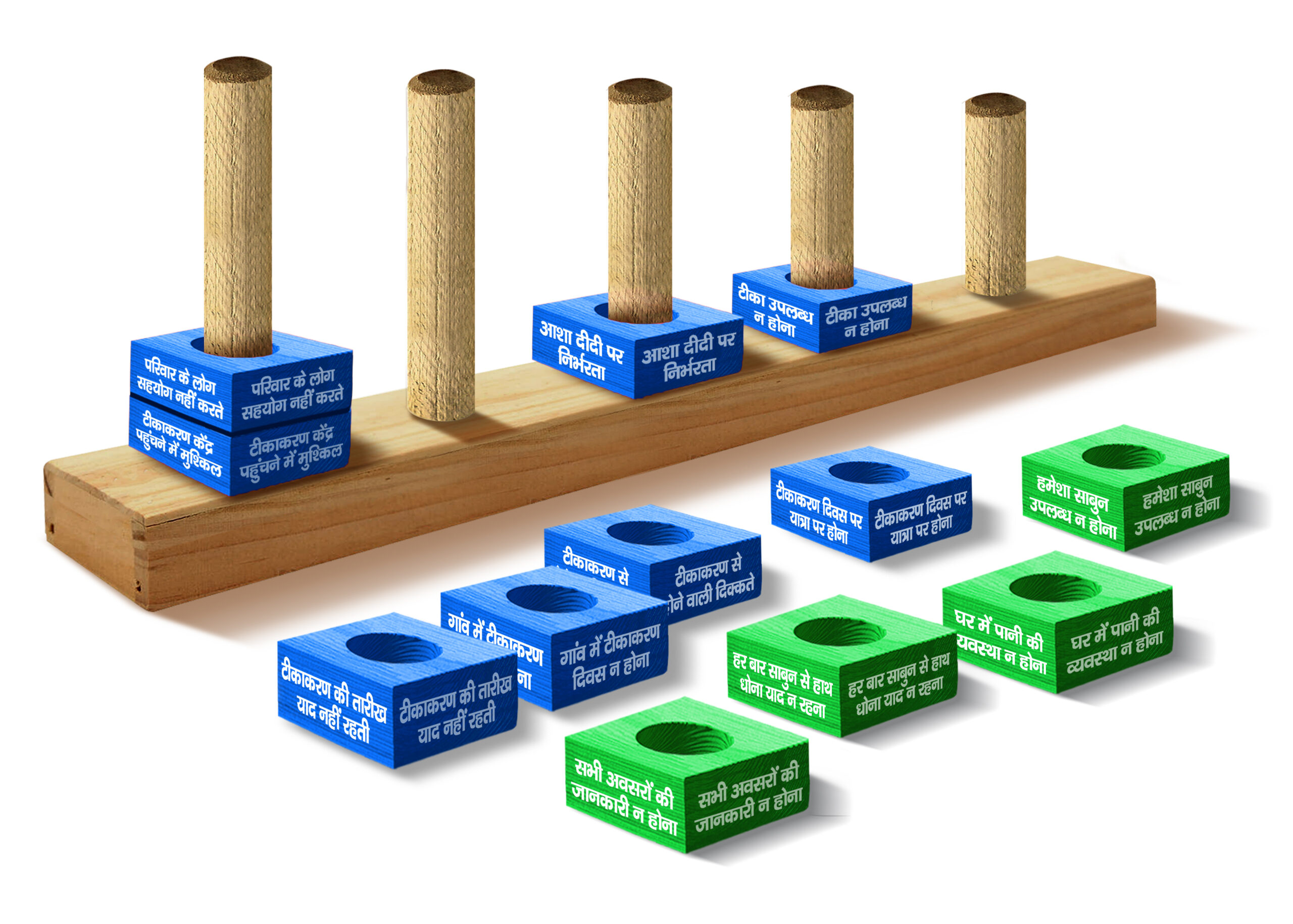Context:
Ensuring complete immunization is paramount in safeguarding children from diseases and fostering their overall development. In Uttar Pradesh as well as at the national level, there is a need for improvement in immunization rates. Unfortunately, parents and caregivers face various psycho-social barriers that hinder their ability to consistently adhere to these essential practices. Hence, identifying and overcoming these challenges is crucial to enhance immunization coverage. During the formative research of Project Safal Shuruaat, common barriers faced by parents in immunizing their children were identified, including vaccine hesitancy, AEFI (Adverse Event Following Immunization) concerns, resistance from elders, forgetfulness, low self-efficacy, perceived low risk of incomplete immunization, missed doses due to travel or other priorities, etc. Overcoming these intrinsic and extrinsic barriers is a significant challenge as their acknowledgement is often lacking.
Purpose:
The ‘Barrier Prioritization Game’ served as a means for parents to openly discuss and rank their barriers to immunization. By collectively ranking these challenges from the most to the least challenging, parents realized that overcoming them is not as difficult as it may seem. The game session provided parents with easy-to-implement solutions tailored to their identified barriers. The game created a fun and engaging environment that empowered parents to actively participate in finding practical ways to overcome their obstacles and ensure timely and complete immunization for their children.
Target Groups:
Parents of 0-2-year-old children
Key Messages:
Overcoming barriers to immunization is achievable with simple solutions and approaches.
Duration:
7-8 minutes
Required Resources:
The Barrier Prioritization tool
How to Use:
- Set up the game- the three-pole unit and the barrier blocks
- Ask parents about the factors that hinder them from practising regular immunization of their children
- Wait for their responses and place the blocks representing their barriers in front of them.
- For the barriers that were not mentioned, ask them individually and inquire if those difficulties also arise.
- Ask parents to use the three poles to categorize the barriers from very challenging to least challenging (largest pole to smallest pole)
- Ask them why a particular challenge is significant or small and what could be the solution to overcome it
- Discuss not only the barriers but also their possible solutions.
- Summarize and reflect





